THE THEATRE ORGAN
PART TWO: BUILDERS OF THE THEATRE ORGANS
THIS PAGE IS WRITTEN IN CONJUNCTION WITH GLEN TWAMLEY (FRIENDS OF BEER WURLITZER)
-oOo-
PAGE TWENTY-TWENTY-SIX:
THE CHRISTIE THEATRE ORGAN CONTINUED
THE CHRISTIE THEATRE ORGAN
OF THE ODEON THEATRE KENSINGTON
-oOo-
A SHORT DETOUR
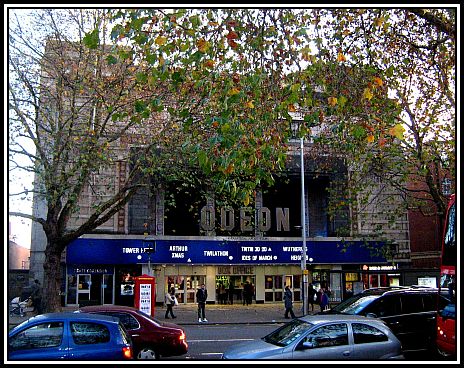 Odeon Theatre Kensington hidden behind the Plane Trees (Species Platanus) in 2011
Odeon Theatre Kensington hidden behind the Plane Trees (Species Platanus) in 2011
The Odeon Theatre Kensington has been in the news during the past couple of years since the building has once again become the subject of redevelopment. It seems that the building was acquired as part of the Minerva transaction in a joint-venture with Ares Management LLC in August 2011.

This matter will be discussed at length a little later, but one point about the various proposals for rebuilding did cause me to smile. I hasten to add that such mirth clearly demonstrates my cynical view of many such proposed changes. Seemingly, the main plan for the site was to remove the auditorium of the cinema and replace it with office space, apartments and a number of cinema screens. While many of the apartments were to be of the luxury type, some were supposedly to be used for affordable housing. My amusement came from the thought that despite its wealthy areas, the Royal Borough of Kensington & Chelsea evidently had poor souls surviving there.
Once I discovered that some of the living space of the new building to replace the Odeon Kensington was for those in need of affordable housing, I wondered what life was actually like for those living in the Royal Borough. To be honest, I certainly found it hard to believe that there are those living on minimum wage, bag ladies and homeless people living in the Royal Borough especially when one thinks of the areas that are twinned with the area: Cannes, Alpes-Maritimes and Provence-Alpes-Côte d’Azur in France.
In my investigations, I discovered that the life expectancy of the populace of the Royal Borough is higher than elsewhere in the U.K. The Office for National Statistics revealed that life expectancy for females was 89.8 years in 2008–2010 and was the highest in the U.K. In addition, it was found that a 12-year gap in life expectancy between the affluent wards of Chelsea (Royal Hospital, Hans Town) and the most northerly wards of North Kensington (Golborne, Dalgarno), which have high levels of social housing and poverty, and which I suppose is where those in need of affordable housing wait for resettlement.
I also discovered that in 2013 by London’s Poverty Profile, which was a joint project between New Policy Institute and Trust for London, that the Royal Borough of Kensington and Chelsea had the greatest imbalance between high and low earners. The top quarter earned at least £41 per hour, three and a half times the level of the lowest quarter at £12 per hour or less.
-oOo-
THE KENSINGTON-MAJESTIC–ODEON THEATRE
IN KENSINGTON
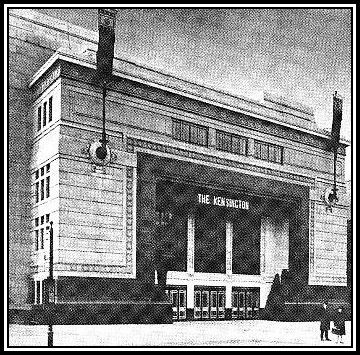 The Kensington at the time of opening in 1926
The Kensington at the time of opening in 1926
The Kensington Kinema was designed by W.F. Granger & Julian Leathart for Joseph T. Theatres with a seating capacity for 2,370 patrons. It opened to the public in January 1926 and was the largest cinema in the U.K. at that time. The exterior was built in classical style with a deeply recessed entrance area and was considered by some to be somewhat austere.
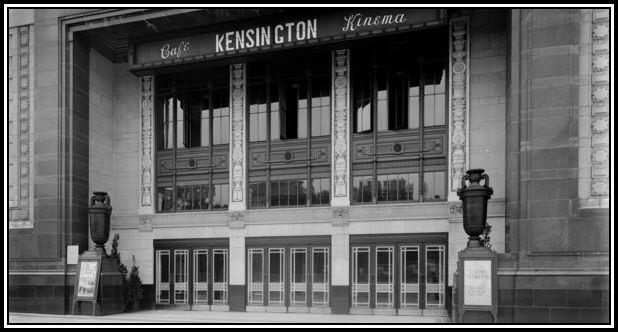 The Entrance of the Kensington Kinema during the 1930s
The Entrance of the Kensington Kinema during the 1930s
Mr. Dennis Sharp in his book The Picture Palace: and other buildings for the movies (Hugh Evelyn, 1969) states that the designers of the building later described the auditorium as giving the feeling of it being less of a cinema and more of a cross between a Roman Basilica and a Non-Conformist Preaching House with its heavily-coffered ceiling and rectangular plan.Palace.
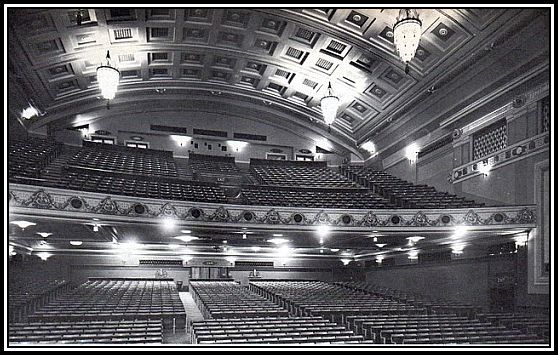 The Auditorium of The Kensington Kinema at the time of opening in 1926
The Auditorium of The Kensington Kinema at the time of opening in 1926
 View of the Proscenium & Stage from the Circle (Left) and from the Stalls (Right) at the time of opening
View of the Proscenium & Stage from the Circle (Left) and from the Stalls (Right) at the time of opening
The Kinema was steel framed building and was once of the earliest to be built in the U.K. This method of construction became extremely popular with other cinema buildings during the 1930’s.
In July 1940, in keeping with wartime policy of not helping possible alien parachutists from knowing exactly where they had landed, the name of the Kinema was changed to the Majestic Cinema. Soon after the Kinema was closed and used for storage by the Government.
Odeon Theatres Limited took over the running of the Majestic Kinema in January 1944 and it was re-opened as an Odeon Theatre in October 1944.
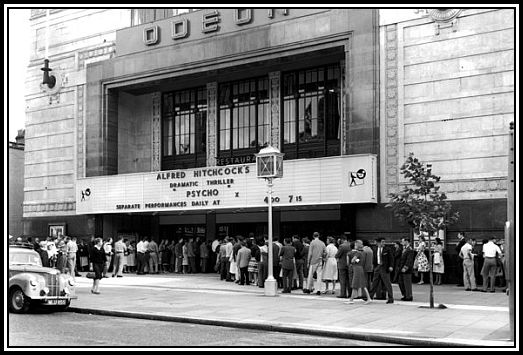 Odeon Theatre Kensington in 1960
Odeon Theatre Kensington in 1960
With the decline in cinema tickets, many cinema were twinned or even tripled. The Odeon Theatre Kensington has undergone many such transformations over the years to attract customers. First, the auditorium was twinned in order to offer a choice of films to patrons:
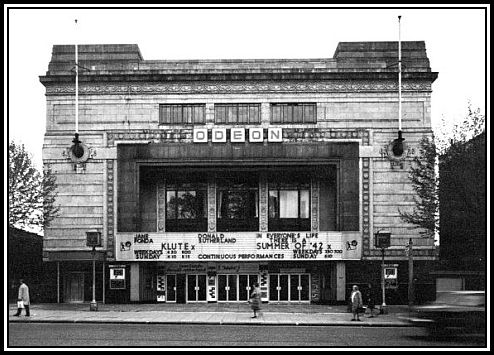 The Now-Twinned Odeon Theatre Kensington in 1973
The Now-Twinned Odeon Theatre Kensington in 1973
Following this, the auditorium was further divided and became a triple-screen cinema in April 1976 and a four-screen cinema in July 1991.
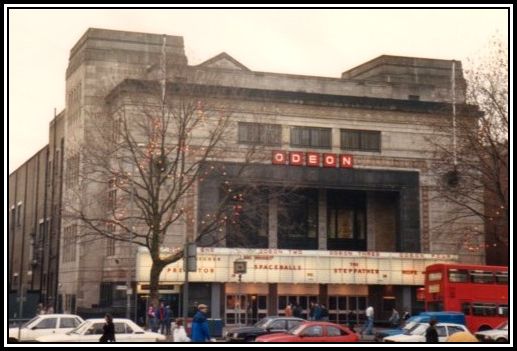 The Four-Screen Odeon Multiplex
The Four-Screen Odeon Multiplex
The erstwhile Theatre was refurbished in 1998, which resulted in little remaining of the original features of the once-ornate auditorium. In 2008, the Theatre now housed six screens with various seating capacities.
Unfortunately for the local populace and for all lovers of film, the Odeon Theatre Kensington was closed on 31st August, 2015.
-oOo-
THE ORGAN INSTALLED AT THE KENSINGTON KINEMA
The Kensington Kinema was equipped with a 3-manual Christie Theatre Organ at the time of opening.

I recently learned that the Organ installed at the Odeon Theatre Kensington was not strictly a Christie Theatre Organ in the traditional sense since it was not really a Unit Theatre Organ, but a Straight Concert Organ with 3-manuals and 32 speaking stops. The Organ was made by Hill, Norman & Beard, which is the company that built the Christie Theatre Organs.
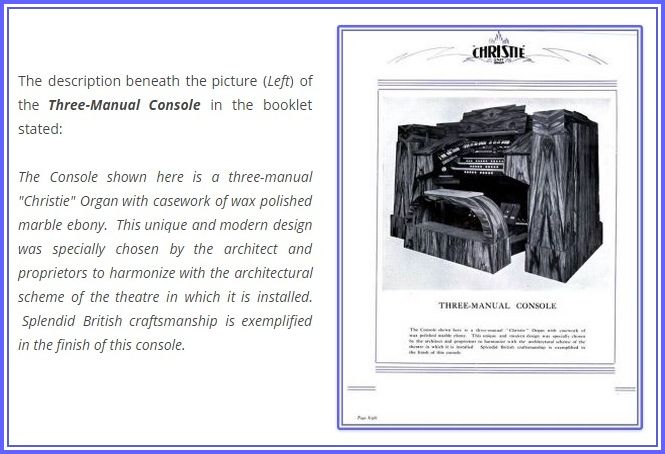
The Organ was played at its opening in 1926 by Charles Saxby. In 1937, Tibia and Krumet Ranks were added to the Organ in order to help make it more theatrical in sound.
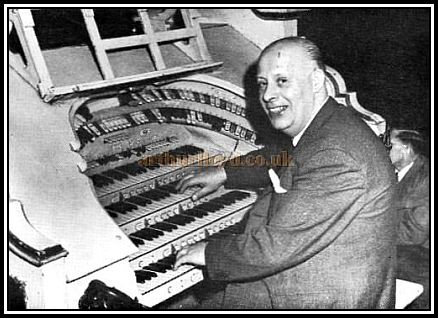 Charles Saxby at a 4-Manual Theatre Organ
Charles Saxby at a 4-Manual Theatre Organ
This photograph is reproduced with permission of Matthew Lloyd
-oOo-
Unfortunately, little seems to be known about the fate of the Organ. However, it was probably removed from the Theatre in the 1950s and most likely broken up and sold to organ builders for use on other projects.
-oOo-
Recently Mr. John Wright of The British Dance Band website sent me two Dance Band recordings, which were produced on the 9th October, 1928 and feature the Straight Concert Organ of the Kensington Kinema.
The recordings were released on the gramophone record, Zonophone 5220, and feature the London Orchestra under the direction of John Firman with Charles Saxby at the Organ playing tunes from the Charles B. Cochran (1972-1951) 1928 Review, This Year of Grace by Noel Coward (1899-1973).
This Year Of Grace, Part 1
Caballero, Dance Little Lady, A Room With A View, Waiting In A Queue, Teach Me To Dance Like Grandma
This Year Of Grace part 2
Try To Learn To Love; I’m Mad About You; Mary Make-Believe
This Year of Grace opened in London on the 22nd March, 1928 at the London Pavilion and enjoyed a run of almost ten months. The original cast featured Sonnie Hale and Jessie among others. The revue also was presented on the Broadway stage for ~150 performances and stared Beatrice Lillie and Florence Desmond.
Although This Year of Grace has not faired well with time and has not been revived, the original production included three tunes, which are remembered today: Dance Little Lady, A Room With A View and World Weary.
I would like to thank Mr. John Wright for his kindness in allowing these pieces to appear here for readers and me to enjoy.
-oOo-
WHAT LIES AHEAD FOR
THE ODEON THEATRE KENSINGTON?
In 1989, an attempt was made to close the Odeon Theatre Kensington and replace the building with another offering different functions. This effort met with much opposition from both local residents and those interested in film and cinema architecture. Other proposals were made since then regarding the future of the building, which also met with resistance.
However in 2011, The Odeon Kensington Cinema was acquired by property developers, Minerva and Ares Management LLC, who proposed to turn the area into office space and luxury flats together with some affordable housing. A number of screens were proposed to be included in the rebuilding and were to be housed below ground level. This proposal has been fiercely fought, but to no avail.
The Theatre closed and the end of August 2015 with a plan to demolish it in 2016. Fortunately the façade is to be maintained and incorporated into the new building. Seemingly the plan includes a six-screen cinema to be included in the basement area with a total seating capacity of 875 seats. The new building is to be known as The Kensington.
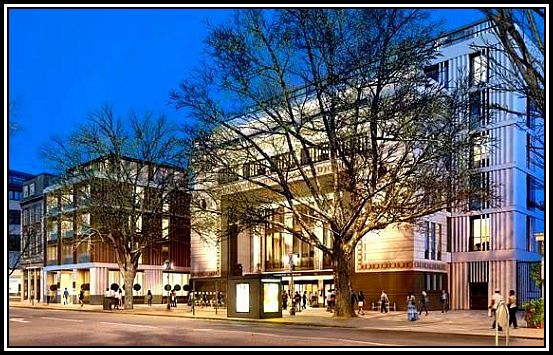 Artist’s Impression of The Kensington with the Plane Trees retained
Artist’s Impression of The Kensington with the Plane Trees retained
-oOo-
Although all seemed set for work to begin on the demolition of the Theatre, those who are against this plan have not given up their hopes of having the building turned into a mixed arts centre and named for Alfred Hitchcock (1899-1980) who, it is said, used to visit the Theatre when he lived on the Cromwell Road nearby. In August 2016, Mr. Hitchcock’s daughter, Ms Patricia Hitchcock O’Connell (1928) added her support to the proposal.
Interested parties will have to wait to hear the final decision of the local Council to see if the building is to be saved or not.
-oOo-
PERSONAL MEMORIES OF
THE ODEON THEATRE KENSINGTON
Although I only went into the Odeon Theatre Kensington on one occasion, I have always had the impression that I knew the Theatre well since I used to pass it whenever I traveled on the 704/705 Green Line Coach from London Victoria to Langley, which I did quite often. In those days, the Theatre had yet to be mutilated into a multiplex.
I always liked the majestic looking exterior of the Theatre and found it to be somewhat grand in appearance. I was surprised to read that the designers of the buildings found the exterior to be austere! I liked the entrance, as it was in recess, the huge windows of the cafe/restaurant and the exterior decoration. Sadly, I never saw the building when the huge Greek Urns were present on each side of the entrance, which I suspect were removed when the huge illuminated advertisement board was installed that covered its full width.
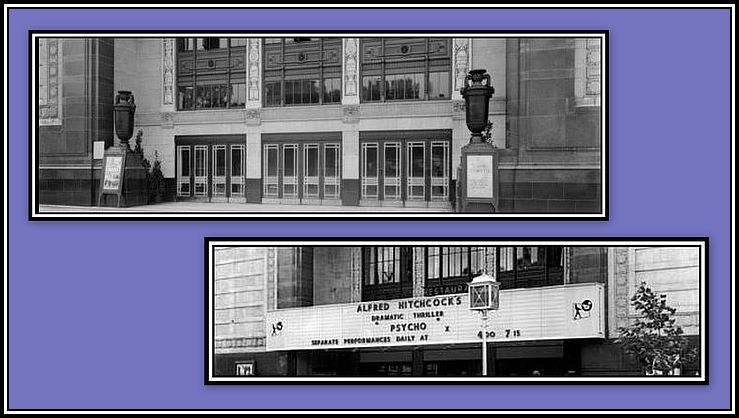 Greek Urns made way for an Odeon Illuminated Advertisement Board
Greek Urns made way for an Odeon Illuminated Advertisement Board
The only time I went to the Odeon Theatre Kensington was in 1964. I was on a double date (!) with a college friend and we were out with two girls from other colleges who lived in Hammersmith, which was just up the road from the Theatre.
I remember having to tolerate a boring afternoon at the home of one of the girls where we had to stay for Tea. I dislike intensely the meal referred to as Tea. I like the drink, but not the accompanying silly little sandwiches and cakes! I remember that it was a very middle class affair, as we were offered strawberries, which I learned could be eaten with bread and butter. Conversation was very stilted and I could not wait to leave. I especially did not like the mother. The father sat in silence and looked as bored as me! Once we escaped, I insisted on going for a drink at the nearest pub!
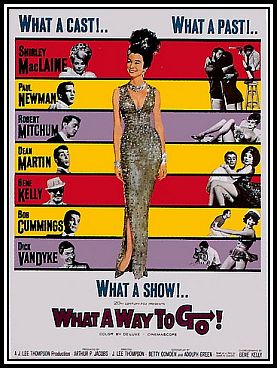
After a few drinks we walked up to the Odeon Theatre, which was showing the film, What a way to go! This was one of the last films made by 20th Century Fox in CinemaScope. This proved to be the only reason to see this film! The film had an all-star cast with Shirley MacClaine (1934), Paul Newman (1925-2008), Robert Mitcham (1917-1997), Dean Martin (1917-1995), Dick van Dyke (1925), Gene Kelly (1912-1996) and Robert Cummings (1910-1990) and consisted of a series of episodes with Ms MacClaine marrying and burying a series of husbands. The film proved to be overly long and not especially interesting – too many husbands perhaps! Ms MacClaine costumes were disastrous and the colour was dreadful. Although the film was said to be a comedy, I only laughed once and that was when Dick van Dyke’s face turned green from joy while counting his money!
I remember that we sat in the Circle, which had very comfortable seats. I also recall being impressed with the decor of the auditorium, which was in very good condition, if my memory serves me well. The foyer, the staircase and the cafe were all impressive.
-oOo-
In November 2011, I was in London, and on a sunny Sunday afternoon while returning from Langley on the bus, I noticed that we were zooming by the Odeon Theatre Kensington. Suddenly I thought that it was about time that I got off the bus and took some photographs of the Theatre while it was still a cinema, albeit a multiplex.
By now the Theatre had been become a six-screen multiplex and so it was easy for me not to go inside. I was going to content myself with photographing the exterior.
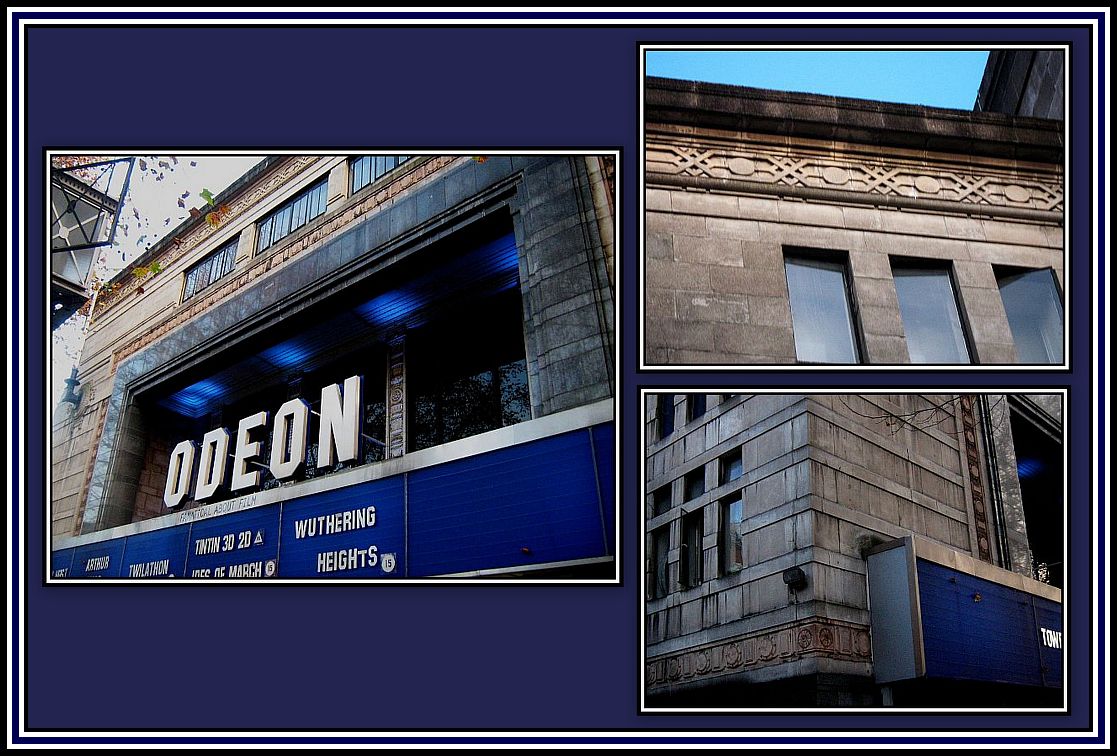
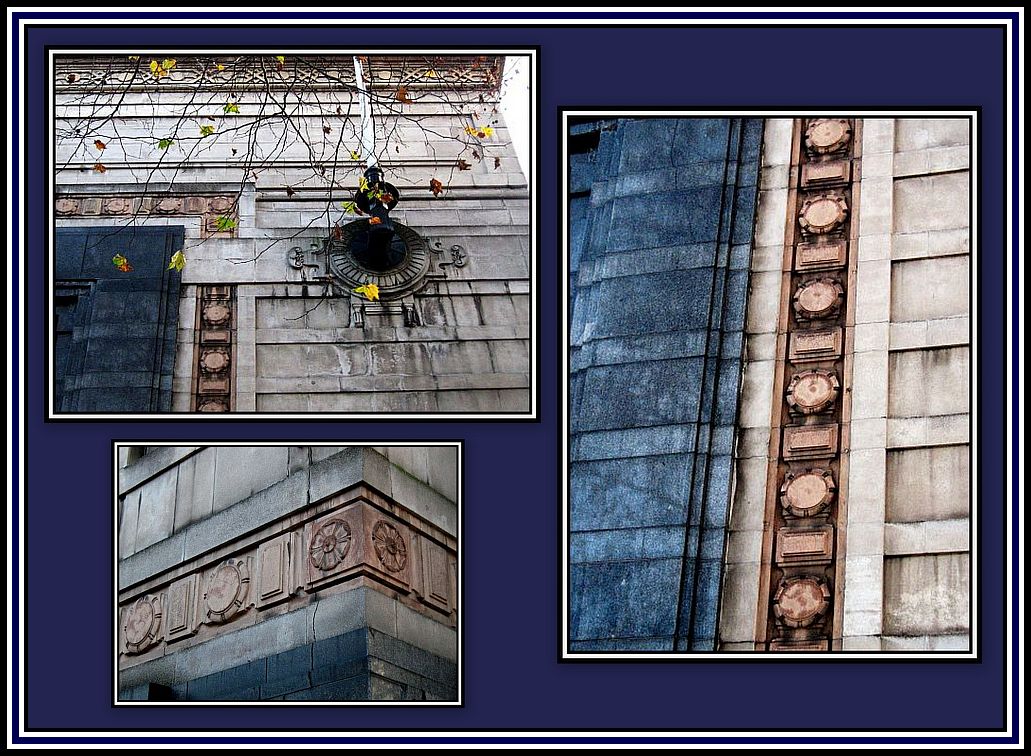
As my photographs reveal, some of the decorative work was somewhat the worst for wear. Let us hope that the new owners will tastefully restore the exterior to its former glory.
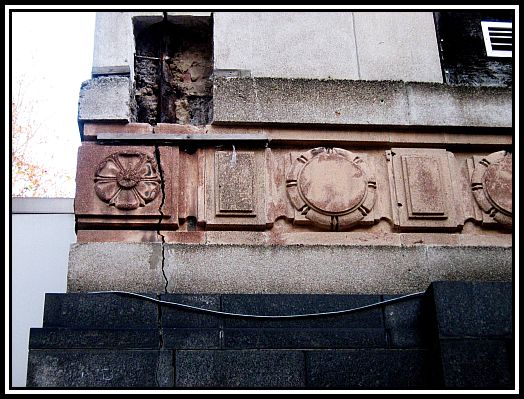
——oooOOOooo——
ACKNOWLEDGEMENTS
I would like to thank Mr. Ian McIver for his help and kindness in the preparation of this piece.
I would like to thank Mr. Paul Bland for his contributions to this piece.
I would especially like to thank Mr. John Wright of The British Dance Band Show website for allowing the recordings featuring the Straight Concert Organ of the Kensington Cinema to appear here.
——oooOOOooo——
Click here to GO to PAGE TWENTY-SEVEN of PART TWO:
THE COMPTON THEATRE ORGAN
THE ORGAN BUILDER
——oooOOOooo——
——oooOOOooo——
Click here to return to PART ONE:
INTRODUCTION TO THE ORGAN
——oooOOOooo——
Click here to return to PART TWO: THE THEATRE ORGAN HOME PAGE
——oooOOOooo——
——oooOOOooo——

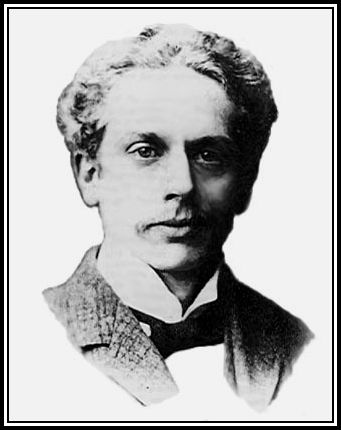
perhaps I can clear up the fate of the Kensington odeon HNB. I belive that we have it at st georges church Toddington, beds. I was always led to believe that it came from the odeon Knightsbridge, but can find no reference to this cinema and as knightsbridge/Kensington are only a short walk from each other…………….Our HNB, certainly did come from a cinema -it was never a Christie unit, but does have the extra holes on the soundboard for the top octave of pipes to be coupled. The console is at first glance theatre organ in its curves, but was ‘squared off’ in the 50’s when installed in Toddington.
there are not tibia stops, but tibia pipes have been renamed as bass flute etc whilst still bearing the label tibia on the front of the pipes. no sign of a krumet, but we do have very impressive 16, 8 and 4 reeds on the solo which may be the old krumett renamed to make them sound more churchy -these reeds sit in a wind chest which has tibia stamped on it just to confuse the situation. It was installed by harris organs of Birmingham in the mid 50’s
I may be totally wrong in making these assumpyions,but they seem to make sense to me. david owen organist and director of music, toddington